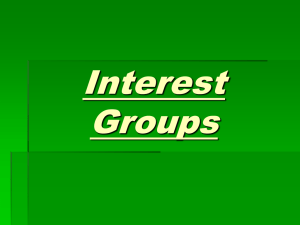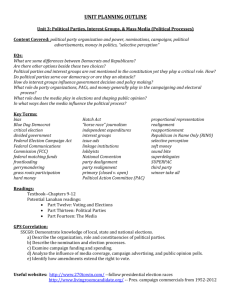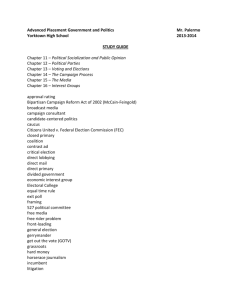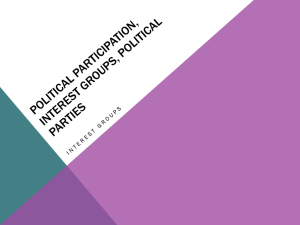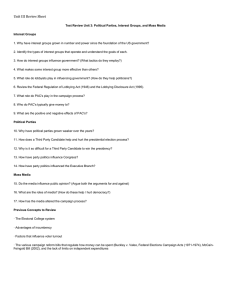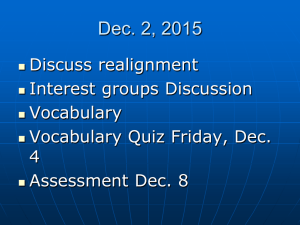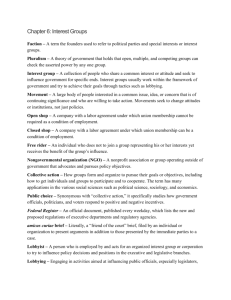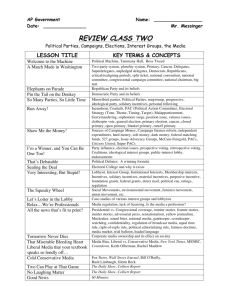Linkage institutions reading guide
advertisement
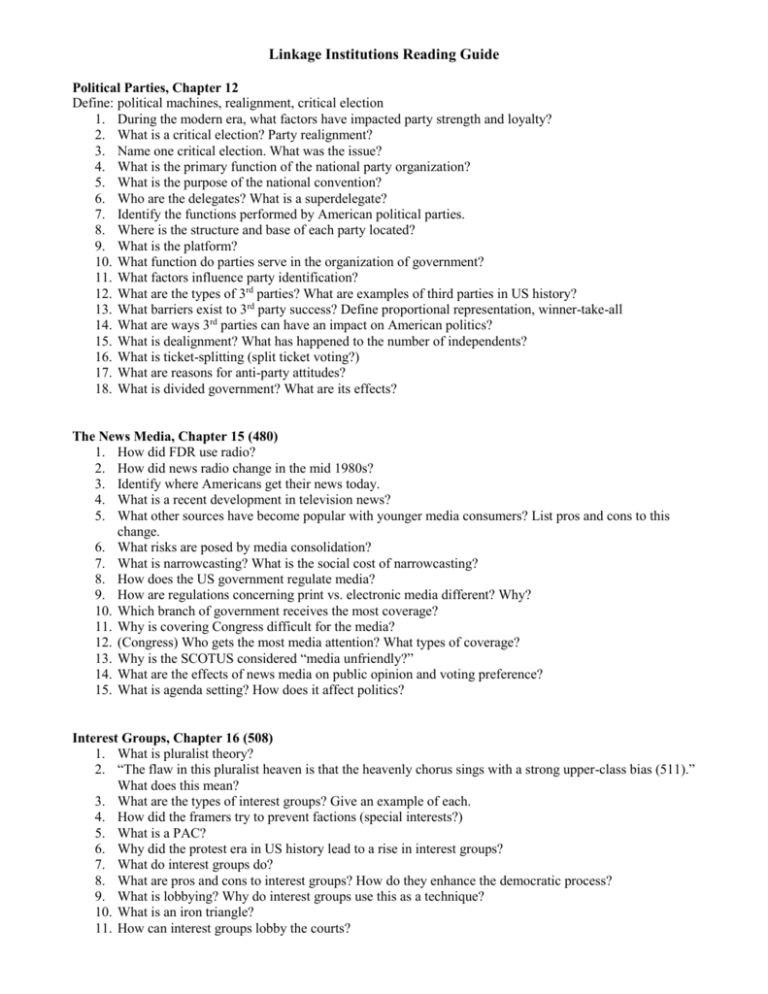
Linkage Institutions Reading Guide Political Parties, Chapter 12 Define: political machines, realignment, critical election 1. During the modern era, what factors have impacted party strength and loyalty? 2. What is a critical election? Party realignment? 3. Name one critical election. What was the issue? 4. What is the primary function of the national party organization? 5. What is the purpose of the national convention? 6. Who are the delegates? What is a superdelegate? 7. Identify the functions performed by American political parties. 8. Where is the structure and base of each party located? 9. What is the platform? 10. What function do parties serve in the organization of government? 11. What factors influence party identification? 12. What are the types of 3rd parties? What are examples of third parties in US history? 13. What barriers exist to 3rd party success? Define proportional representation, winner-take-all 14. What are ways 3rd parties can have an impact on American politics? 15. What is dealignment? What has happened to the number of independents? 16. What is ticket-splitting (split ticket voting?) 17. What are reasons for anti-party attitudes? 18. What is divided government? What are its effects? The News Media, Chapter 15 (480) 1. How did FDR use radio? 2. How did news radio change in the mid 1980s? 3. Identify where Americans get their news today. 4. What is a recent development in television news? 5. What other sources have become popular with younger media consumers? List pros and cons to this change. 6. What risks are posed by media consolidation? 7. What is narrowcasting? What is the social cost of narrowcasting? 8. How does the US government regulate media? 9. How are regulations concerning print vs. electronic media different? Why? 10. Which branch of government receives the most coverage? 11. Why is covering Congress difficult for the media? 12. (Congress) Who gets the most media attention? What types of coverage? 13. Why is the SCOTUS considered “media unfriendly?” 14. What are the effects of news media on public opinion and voting preference? 15. What is agenda setting? How does it affect politics? Interest Groups, Chapter 16 (508) 1. What is pluralist theory? 2. “The flaw in this pluralist heaven is that the heavenly chorus sings with a strong upper-class bias (511).” What does this mean? 3. What are the types of interest groups? Give an example of each. 4. How did the framers try to prevent factions (special interests?) 5. What is a PAC? 6. Why did the protest era in US history lead to a rise in interest groups? 7. What do interest groups do? 8. What are pros and cons to interest groups? How do they enhance the democratic process? 9. What is lobbying? Why do interest groups use this as a technique? 10. What is an iron triangle? 11. How can interest groups lobby the courts? Linkage Institutions Reading Guide 12. 13. 14. 15. What is grassroots lobbying? Why do groups use protests and more radical activism? What election activities do interest groups participate in? What is a free rider? The Campaign Process, Chapter 14 (452) 1. How does a nomination campaign differ from a general election campaign? 2. What is the Federal Campaign Act of 1971 (FECA)? What is the FEC? 3. Outline the provisions of the BCRA (McCain Feingold.) 4. Define: hard money, soft money 5. What is a PAC? 6. Explain the Citizens United decision. 7. What has happened to the number of PACs? Who benefits most from PAC contributions? 8. Why are PACs controversial? 9. What are member PACs? 10. What was the ruling in Buckley v. Valeo? 11. Who can qualify for public funding of campaigns? 12. What activities do 527 and 501(c) groups participate in? 13. What is horserace journalism? How does it affect the public? 14. Decisions: Baker v. Carr; Smith v. Allwright
